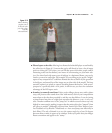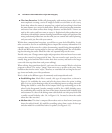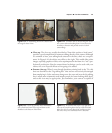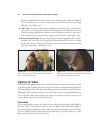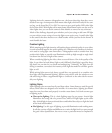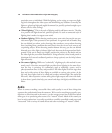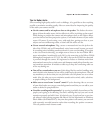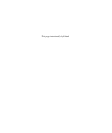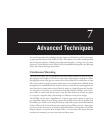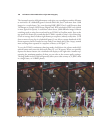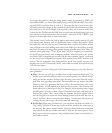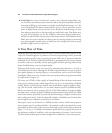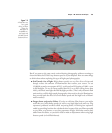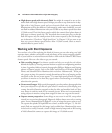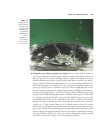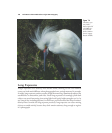
I’ve saved some advanced techniques for this chapter, which devotes a little extra space
to some special features of the Nikon D7000. This chapter covers GPS techniques and
special exposure options, including time-lapse photography, very long, and very short
exposures. I wind up this section with a list of recommended settings for your Shooting
menu and Custom Settings menu banks.
Continuous Shooting
The Nikon D7000’s pair of continuous shooting modes reminds me how far digital
photography has brought us. The first accessory I purchased when I worked as a sports
photographer some years ago was a motor drive for my film SLR. It enabled me to snap
off a series of shots in rapid succession, which came in very handy when a fullback broke
through the line and headed for the end zone. Even a seasoned action photographer can
miss the decisive instant when a crucial block is made, or a baseball superstar’s bat shat-
ters and pieces of cork fly out. Continuous shooting simplifies taking a series of pic-
tures, either to ensure that one has more or less the exact moment you want to capture
or to capture a sequence that is interesting as a collection of successive images.
The D7000’s “motor drive” capabilities are, in many ways, much superior to what you
get with a film camera. For one thing, a motor-driven film camera can eat up film at an
incredible pace, which is why many of them are used with cassettes that hold hundreds
of feet of film stock. At three frames per second (typical of film cameras), a short burst
of a few seconds can burn up as much as half of an ordinary 36 exposure roll of film.
Digital cameras, in contrast, have reusable “film,” so if you waste a few dozen shots on
non-decisive moments, you can erase them and shoot more.
7
Advanced Techniques



